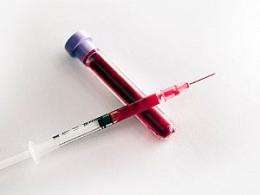Resource for physicians and parents created to make routine medical procedures such as blood draws less stressful for children with autism.
The Vanderbilt Kennedy Center has joined with Autism Speaks to create a resource for physicians and parents of children with autism to better prepare for blood draws and other routine medical procedures. This new toolkit, called “Taking the Work Out of Blood Work: Helping Your Child with an Autism Spectrum Disorder – A Parent’s Guide,” and the companion: “Taking the Work Out of Blood Work: Helping Your Patient with an Autism Spectrum Disorder – A Provider’s Guide,” was created to help families and health care providers make necessary medical procedures less stressful.
For children with autism spectrum disorder (ASD), medical procedures such blood draws can be very difficult. Reliance on fixed routines, communication and social interaction deficits and sensory sensitivities experienced by many children with autism are the significant factors to be considered when preparing them for a blood draw.
This toolkit provides evidence-based behavioral strategies for parents and health care professionals that can be used before and during the medical visit and procedure.
“I often observed that many of our children with ASD struggle with completing routine blood work, whether as part of a research protocol or as part of their normal medical care,” said Cassandra Newsom, assistant professor of pediatrics. “Parents and children both appeared anxious as the time approached for the blood draws to occur. Nurses and phlebotomists often struggled to communicate effectively with our patients with ASD and help them stay calm. Our team knew we needed to pool our knowledge about techniques proven to be effective with children with ASD and research into pediatric pain management to improve everyone’s experience.”
Graduate students and post-doctoral fellows enrolled in the Vanderbilt Leadership Education in Neurodevelopmental and Related Disabilities (LEND) program collaborated with Kennedy Center members Newsom and Evon Lee, associate professor of pediatrics, psychology and psychiatry, to develop these toolkits. The group interviewed pain and developmental specialists across Vanderbilt University Medical Center, observed blood draws of children with ASD and drew from established strategies in the ASD research literature.
In the parent’s guide, families are advised when and how to explain procedures, and there are suggestions for bringing toys or visual supports. Strategies for relaxation and distraction using toys, music and laughter are described, and it’s suggested that these be practiced at home during times of the day when your child is already anxious.
The provider’s guide links to a sample triage questionnaire which will assist the practitioner’s office in gathering information about their patient in advance. Guidance is provided on coordination with other providers so that all needed tests can be completed with one blood draw rather than multiple sticks. Further, if the patient will be sedated for a different procedure, it is recommended that the blood draw be scheduled while the patient is under sedation. A brief written protocol including a backup plan may help staff and practitioners become more coordinated in their approach to patients with autism.
More information: Autism Speaks offers downloadable files of the blood draw toolkits for both parents and providers free of charge. For more information on this and other resources from Autism Speaks, click here.
Provided by Vanderbilt Medical Center


















